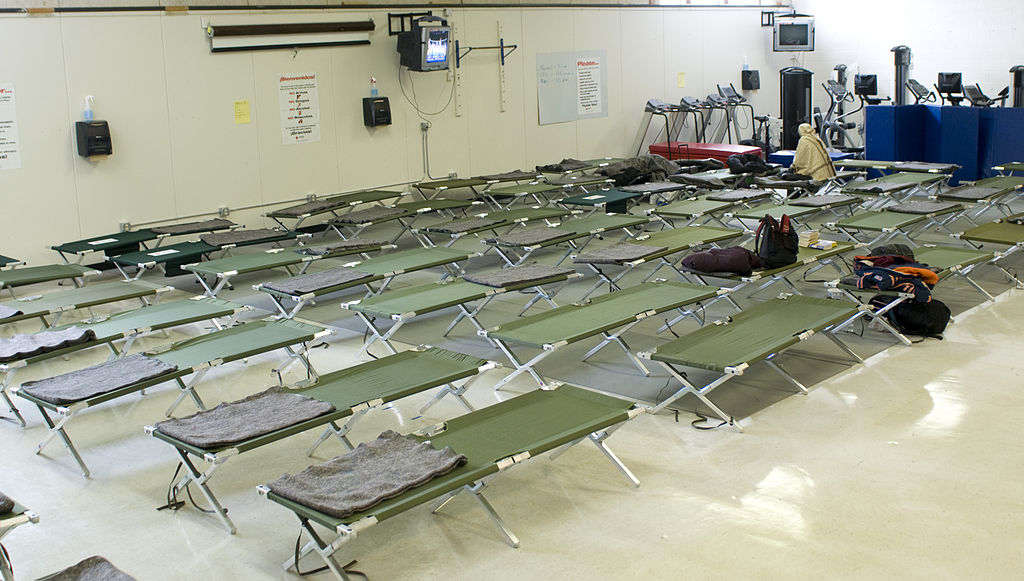When District officials made plans late last year to renovate rooms for 100 additional homeless families at the old D.C. General Hospital, the plan seemed more than adequate.
The new space would allow the city to move roughly 50 families being housed in area motels into the hospital, and accommodate more if needed.
But as the 100 rooms were being completed, homeless families continued appearing at a rate officials did not anticipate. Once again, the system was overwhelmed. On a recent night, the city found itself paying motel rates for 211 families, four times the number in December.
At a Feb. 14 meeting of the city’s Interagency Council on Homelessness, Human Services director
David Berns could only express bewilderment at the ever-growing need.
“I had no idea that the number of families facing homelessness would in- crease so much,” the director said. “Our original projection last year was that we would be able to handle everybody in D.C. General’s existing capacity.”
Even before renovation work began on the additional 100 rooms, the hospital, which has served as the city’s family homeless shelter for the past four years, could accommodate 153 families. Families began moving into the newly renovated rooms in mid- January with the last rooms scheduled to open by Feb. 27, according to Department of Human Services administrator Fred Swan.
In the wake of the recession and housing crisis, cities all over America have dealt with rising numbers of homeless families. In the District, 858 families, including 1,600 children, were included in the 2011 Point-In-Time homeless count, a seven percent increase over 2010.
In addition to the rising numbers, homeless families are facing barriers in moving out of the shelter system into more permanent housing, said Swan.
“The system never stops,” Swan said. “When people get in and don’t get out, it clogs up the system.”
City officials are quick to admit that sheltering homeless families in an obsolete hospital is far from ideal. But a room in the hospital is far better than the streets.
“It’s better to have something for them than nothing,” said city Council- man Jim Graham, who chairs the council’s human services committee.
Graham said that he is waiting to see how much money district Mayor Vincent Gray will include in his budget for housing and human services to help families overcome the problems underlying their homelessness. In the meantime, Graham said he is trying to raise awareness about the needs.
“It’s much better to have the message carried now before the mayor submits his budget,” Graham said. “Once we have the budget, it’s hard to change.”
Some families became homeless as a result of recent economic problems. Others have struggled for
years.
Polly Donaldson is the executive director of Transitional Housing Corporation, a faith-based non-profit that provides housing and support services to homeless and at-risk families. She said that many of the families her organization serves have been caught in poverty for generations.
Some who grew up in temporary housing have now returned with their families to request housing once more, said Donaldson, who, like Berns, at- tended the recent meeting of the Inter- agency Council on Homelessness (ICH).
An ICH work-plan for 2012 lays out strategies and goals for helping families move through the shelter system and into transitional or permanent housing.
One approach involves streamlining the process by which families apply for temporary and/or permanent housing by using resources available through the Temporary Assistance for Needy Families, or TANF, program.
Berns noted that nearly 30 percent of families on TANF are homeless or living in unstable housing
situations. Of those living in family shelters like D.C. General, Berns said that close to 95 percent of the individuals are on, or eligible for, TANF.
Until this point, the shelter ran its intake and TANF programs separately. But by combining intake and case management services, the Department of Human Services could provide assistance in a more holistic manner, Berns said.
“Through TANF, we can actually start concentrating on something other than housing and shelter, but also work on employment, mental health issues, and do it all as a unified approach,” he said. “We just think that this is the only way to go.” Merging TANF with the intake process would help homeless families move through the system faster, Swan agreed. He added that the key at this point is to have the 800 plus families in the system complete a TANF assessment so they can potentially gain permanent
housing sooner.








